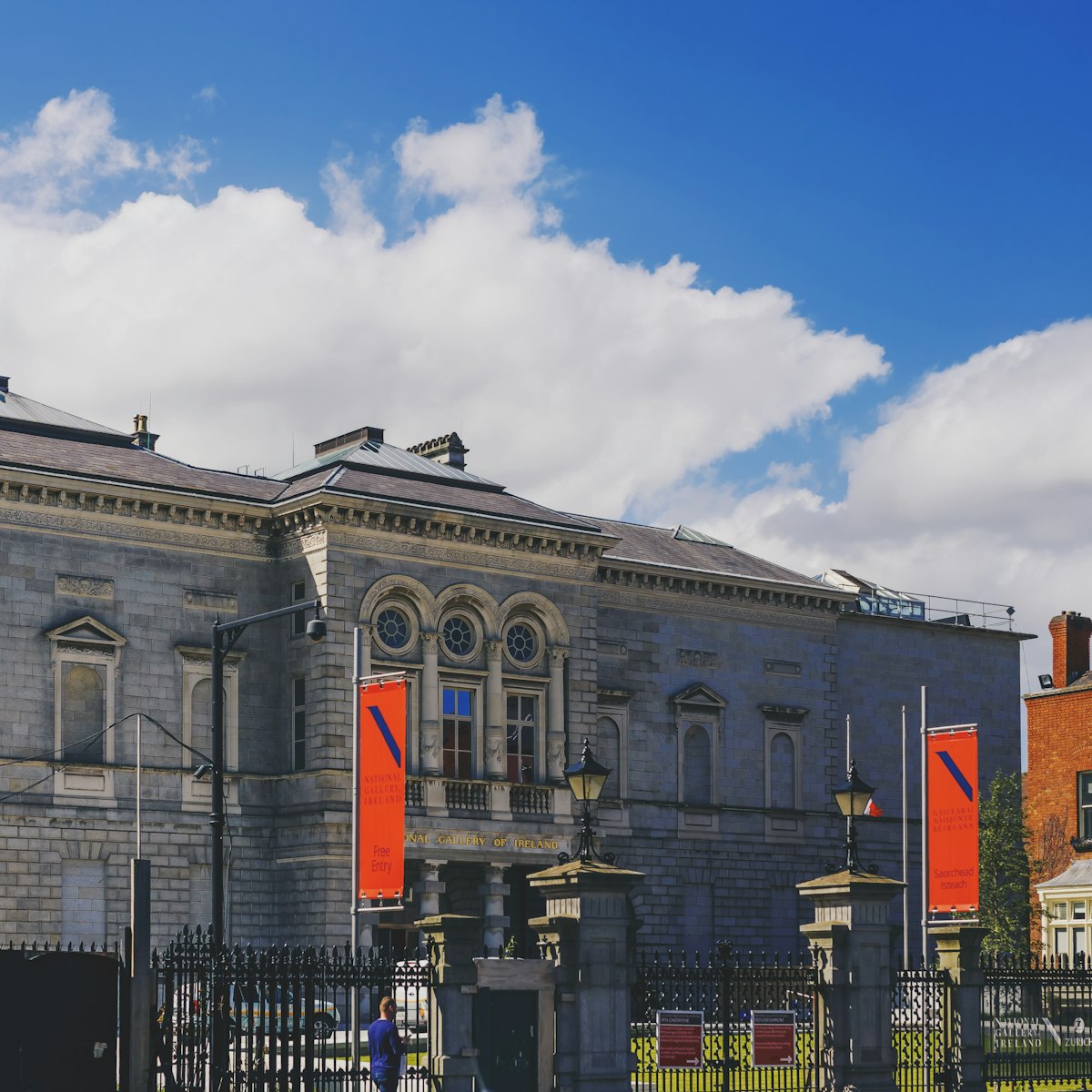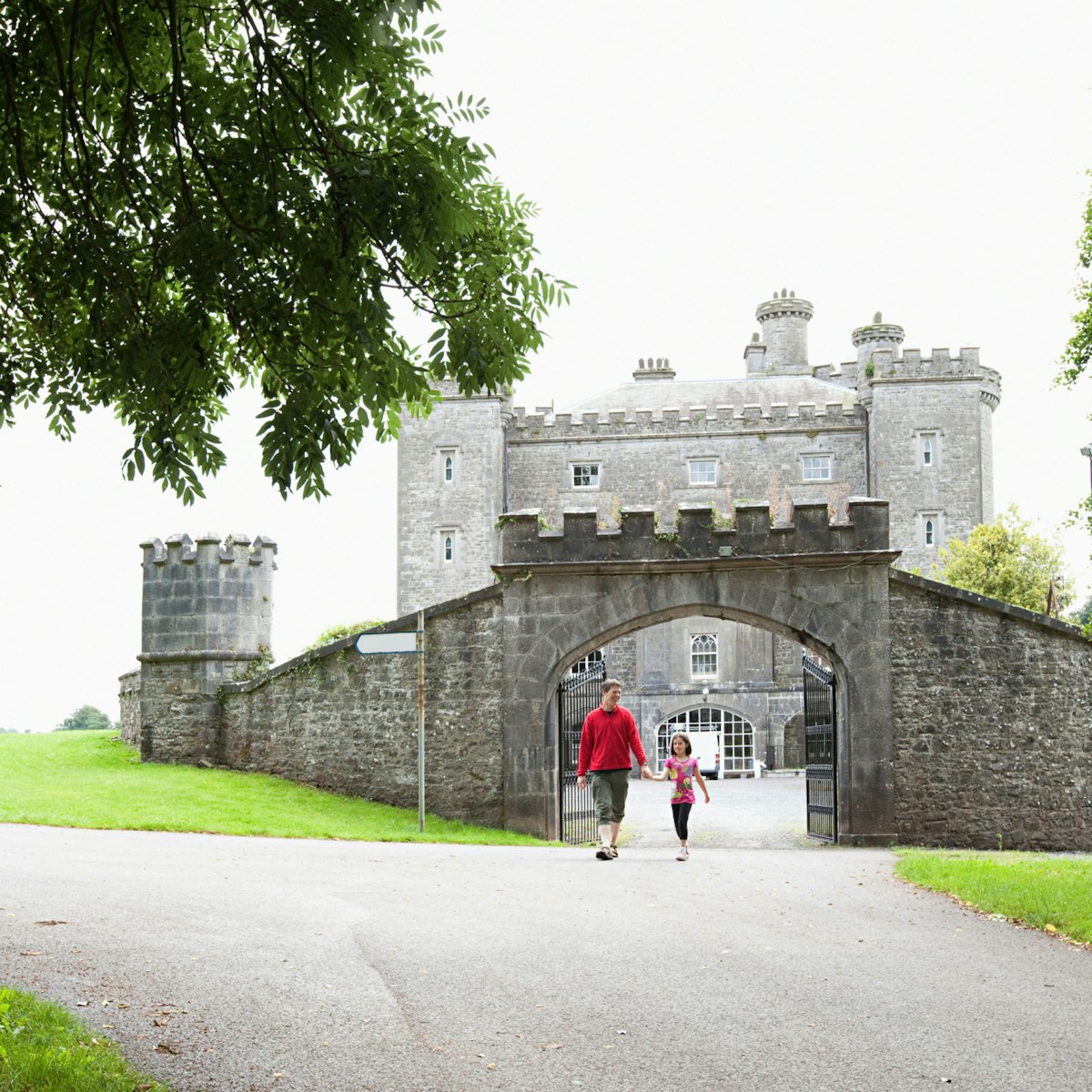Ireland's largest church and the final resting place of Jonathan Swift, St Patrick's stands on the spot where St Patrick himself reputedly baptised the local Celtic chieftains in the 5th century. Fiction or not, it's a sacred bit of turf upon which this cathedral was built between 1191 and 1270.
Why you should go
Located in the historic Liberties district, St Patrick's is one of the most visited sites in Ireland and one of the few buildings left from medieval Dublin. The cathedral is famous for its choir, which is Ireland's oldest - dating all the way back to 1432, who perform here daily, Monday to Friday, during school term. Its Christmas service is not to be missed.
The cathedral is filled with artefacts, most notably the baptistry; the oldest part of the cathedral, which was probably the entrance to the original building. It contains the original 12th-century floor tiles and medieval stone font, which is still in use. Inside the cathedral proper, you come almost immediately to the tombs of Jonathan Swift (author of Gulliver's Travels) and Esther Johnson, his long-term companion, better known as Stella. The Latin epitaphs are both written by Swift, and assorted Swift memorabilia lies all over the cathedral, including a pulpit and a death mask.
On your way around the church, you'll see a cross on a stone slab that once marked the position of St Patrick's original well, where, according to legend, the patron saint of Ireland rolled up his sleeves and got to baptising the natives. You'll also take in the four sections of the permanent exhibition, Living Stones, which explores the cathedral's history and the contribution it has made to the culture of Dublin.
History
Although a church has stood here since the 5th century, this building dates from the turn of the 12th century and has been altered several times, most notably in 1864 when it was saved from ruin and, some might say, over-enthusiastically restored. The interior is as calm and soothing as the exterior is sombre. The picturesque St Patrick's Park, adjoining, was a crowded slum until it was cleared in the early 20th century.
It's likely that St Patrick's was intended to replace Christ Church as the city's cathedral, but the older church's stubborn refusal to be usurped resulted in the two cathedrals being virtually a stone's throw from one another. Separated only by the city walls (with St Patrick's outside), each possessed the rights of cathedral of the diocese. While St Pat's isn't as photogenic as its neighbour, it probably surpasses its more attractive rival in historical terms.
Like Christ Church Cathedral, the building has suffered a rather dramatic history of storm and fire damage and has been altered several times (most questionably in 1864 when the flying buttresses were added, thanks to the neo-Gothic craze that swept the nation). Oliver Cromwell, during his 1649 visit to Ireland, converted St Patrick's to a stable for his army's horses, an indignity to which he also subjected numerous other Irish churches. In 1666 the Lady Chapel was given to the newly arrived Huguenots and became known as the French Church of St Patrick. It remained in Huguenot hands until 1816. The northern transept was known as the parish church of St Nicholas Without (meaning outside the city), essentially dividing the cathedral into two distinct churches.
Such confusion led to the building falling into disrepair as the influence of the deanery and chapter waned. Although the church's most famous dean, Jonathan Swift, (who served here from 1713 to 1745), did his utmost to preserve the integrity of the building, by the end of the 18th century it was close to collapse. It was just standing when the benevolent Guinness family stepped in to begin a massive restoration in 1864.
Fun Fact: 'chance your arm'
Towards the north transept is a door that has become a symbol of peace and reconciliation since it helped resolve a scrap between the Earls of Kildare and Ormond in 1492. After a feud, supporters of the squabbling nobles ended up in a pitched battle inside the cathedral, during which Ormond's nephew – one Black James – barricaded himself in the chapterhouse. Kildare, having calmed down, cut a hole in the door between them and stuck his arm through it to either shake his opponent's hand, or lose a limb in his attempt to smooth things over. James chose mediation over amputation and took his hand. The term 'to chance your arm' entered the English lexicon and everyone lived happily ever after – except Black James, who was murdered by Kildare's son-in-law four years later.
Visiting and other practicalities
Attend a sung Mass for the best atmosphere – at 11.15am on Sundays throughout the year, or at 9am Monday to Friday during school term only. Advance tickets are not valid on Sundays between 10.45am and 12.30pm and between 2.45pm and 4.30pm. Last admission is 30 minutes before closing time.
General admission is €7.50 for adults and €6.50 for children, with discounts available for group tours. Tickets can be purchased online. St Patrick's is about a 15-minute walk from Grafton Street.
What's nearby?
Cross Clanbrassil Street and head for Fumbally for a sandwich or a hot bite or wander up to the corner of St Francis Street for a lunch in Two Pups Coffee. If you need something to fortify your spirits before or after your visit, Fallon's is one of Dublin's best pubs… and is conveniently only a short walk away.











